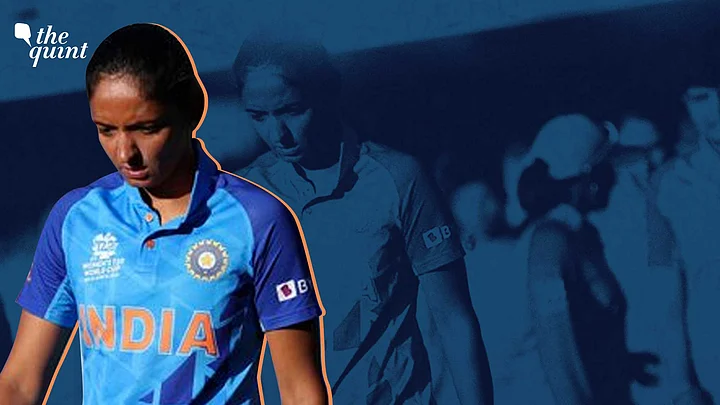As she arrived for the post-match interview, Harmanpreet Kaur looked distraught. It had been a few minutes since her team suffered an agonising defeat, but for the sinking feeling of a defeat to subside, Kaur, the captain of the Indian women’s cricket team, required much more than a few minutes.
Explaining her team’s defeat, she said “There was nothing much in the wicket. The batsmen didn't handle nerves too well.”
The match we are talking about is the Women’s Asia Cup 2018 final, and not the ICC Women’s T20 World Cup 2023 semi-final. Yet, it will not be just to blame anyone for presuming the latter, with sundry instances of India's narrow defeats in knockout matches.
Back in 2018, we witnessed the Indian batting unit crumble like a castle of cards, scoring only 112 runs in Kuala Lumpur. Five years later, it was the bowling which did not fire all cylinders, conceding 172 runs against Australia.
On both occasions, India braved all odds and put up a scrabble, with the scrabble being a spectacle to behold. Despite having only 112 runs to defend, Kaur’s girls took the game to the last delivery in 2018. In 2023, despite once reeling at 28/3 in a tall climb of 173 runs, India were in the hunt till the penultimate delivery.
Amid the resilience, which rightfully garnered praises, and resolution, which earned plaudits, what worked out against India is the paramount aspect of any and every contest – the result.
That, to say that the bravehearts from the nation gave their all on the pitch and won hearts, is righteous, for the endeavour should never be undermined. That, to say the lack of a franchise T20 competition results in poor game management at the big stages, will be non-partisan.
Beyond that, however, the team’s performance under pressure warrants a closer inspection.
A Worrying Pattern, Repeated Often
Only a few months after the Asia Cup defeat to Bangladesh, India faced England in the semi-final of the T20 World Cup 2018. To say Harmanpreet Kaur’s team was flying the group stage will be a massive understatement.
A 34-run win against New Zealand inspired hope, a seven-wicket triumph against Pakistan sparked ecstasy, whilst a 52-run victory over Ireland established dominance. All of that being said, it was only when India got the better of the most intimidating team in women’s cricket, Australia, and that too by a significant margin of 48 runs, that the team started getting touted as a prime title favourite.
The semi-final, amid the highest of highs, came as a major dampener – the lowest of lows. Kaur & Co. were bowled out for merely 112 runs, as only two Indian batters could breach the 20-run mark. England then chased the total down at the loss of only two wickets.
The Last Stumbling Block
Three years ago, India got the better of Australia again, in the Tri-Nation series down under. But that was in the league phase, and when it came to the final, Meg Lanning’s team had the last laugh. Chasing a target of 156 runs, India had a good start and scored 54/1 in 8 overs, only to be bowled out for 144.
After what is often regarded as a ‘surrender’ in the final of the 2020 T20 World Cup, India met the Aussies again in the Commonwealth Games final, only six months ago. The performance, keeping the result isolated, deserved applause again.
To restrict the Aussies to 161, and then to continue fighting till the last over, required an effort par valiance. Yet, given that they were once placed comfortably at 118/2, it was India’s game to lose and they did lose – a pattern that was repeated in Cape Town a night ago.
Requiring 41 off the last 33 deliveries, with six wickets in hand, the odds were stacked in India’s favour. The result could have been different if only Kaur’s bat did not get stuck on the pitch, but the narrative serves as an extension to what is now a prolonged list of agonising ‘if onlys.’
Take nothing away from the holistic performance, for India are now a team that can match the gazes of Australia and England. For in every occasion where a bunch of eleven, donning the royal blue, step onto the field, there is a solitary certainty – they will battle gallantly.
The personnel are battle-hardened, and the strategies are in place. It is only the execution which now needs to be perfected, and for that to happen, perhaps it will only be right to call for scrutiny amid acclamation.
(At The Quint, we question everything. Play an active role in shaping our journalism by becoming a member today.)
